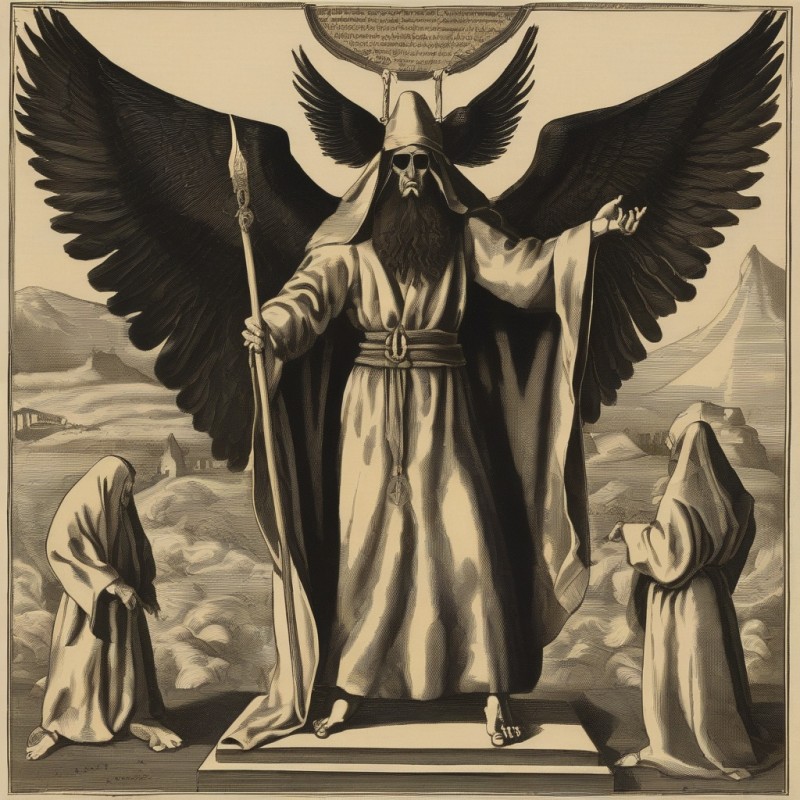 x
x
"Azazel"
Azazel is a multifaceted figure whose portrayal varies across different religious and cultural traditions. Here is a detailed description of Azazel from various sources:
Jewish Tradition
In Jewish tradition, Azazel is most prominently mentioned in the context of the Yom Kippur ritual described in the Book of Leviticus (16:8-10). During this ritual, two goats were chosen: one was sacrificed to Yahweh, and the other, known as the "scapegoat," was sent into the wilderness "for Azazel." This goat symbolically carried the sins of the people away, thus purifying the community.
Apocryphal and Pseudepigraphal Texts
In texts such as the Book of Enoch, Azazel is depicted as one of the leaders of the fallen angels or "Watchers" who descended to Earth and mated with human women, producing the Nephilim, a race of giants. Azazel is particularly singled out for teaching humans forbidden knowledge, including:
The art of warfare:He taught men how to make swords, knives, shields, and breastplates.
- Cosmetics and adornment: He taught women the art of beautifying themselves, which led to moral corruption.
- Alchemy and magic:He imparted knowledge about metals and other elements, contributing to the spread of sorcery and other dark arts.
As a result of these actions, Azazel is often seen as a corrupting influence on humanity, leading to widespread sin and chaos.
Characteristics and Symbolism
- Rebellion:Azazel is often portrayed as a rebellious figure who defies divine authority.
- Forbidden Knowledge: He is associated with the dissemination of forbidden knowledge, particularly in the realms of warfare, seduction, and alchemy.
- Punishment: In various texts, Azazel is punished severely for his transgressions. In the Book of Enoch, he is bound and cast into a desert or abyss to await judgment.
- Scapegoat: In the Jewish ritual context, Azazel represents the concept of a scapegoat, a means of atoning for and removing sin.
Modern Interpretations
In modern occult and esoteric traditions, Azazel is sometimes invoked as a powerful spirit or demon. He is often associated with themes of rebellion, knowledge, and transformation. Some contemporary interpretations view him as a symbol of enlightenment and liberation from oppressive structures.
Summary
Azazel is a complex figure whose attributes and stories vary widely across different religious and cultural contexts. He is generally seen as a symbol of rebellion, forbidden knowledge, and the consequences of defying divine will. Whether as a fallen angel, a demon, or a symbolic scapegoat, Azazel's story serves as a cautionary tale about the dangers of hubris and disobedience. His legacy continues to be a subject of fascination and interpretation in various religious, literary, and occult traditions.
ns 15.158.61.36da2






















